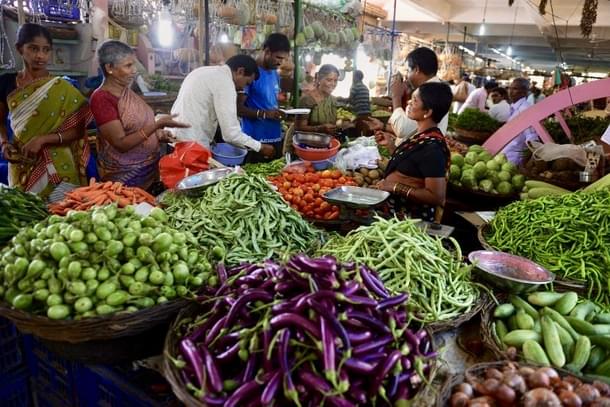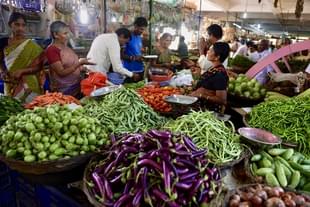Economy
Why The Headline CPI Print Does Not Tell The Full Truth; The Story Is In The Inflation Of Little Things
R Jagannathan
Nov 13, 2020, 11:25 AM | Updated 11:25 AM IST
Save & read from anywhere!
Bookmark stories for easy access on any device or the Swarajya app.


The return of consumer price index (CPI) inflation, with the October print at a six-year high of 7.61 per cent, should not be seen as too much of a negative symbol of over-heating.
For an economy that contracted 23.9 per cent in April-June, and could report negative growth again in the July-September quarter, the resurgence of demand after five months of Covid-related lockdown and contraction is bound to have an uneven impact on prices, especially food prices.
Food prices inflation rose from 10.68 per cent in September to 11.19 per cent in October.
Food price inflation and rural wages were at low levels for most of the last six years.
Post-Covid, when consumer demand shifted from discretionary items to food and essentials, some of this increased spending played into higher prices — a trend boosted by transport restrictions.
But after the restrictions have been eased, we are seeing an additional trend of informal sector service businesses pushing price hikes in order to make up for weak volumes and lost earnings. This is being done either by actually raising prices or reducing quantities while maintaining prices.
Anecdotally, I can show you what is happening.
In Thane, where I live half the year, my roadside chaiwala has boosted prices by 20-43 per cent without actually hiking prices. I used to get 100+ ml of tea in a glass at Rs 7 before Covid. Now I get about 60 per cent of the same volume for Rs 7 in a tiny paper cup. Even adding 50 paise as the cost of supplying tea in a disposable paper cup, his price is up in nominal terms. I get Rs 5 worth of tea with a 50 paise cup for Rs 7, a 27 per cent price hike from pre-Covid times.
Plus, the chaiwala saves on costs by brewing tea only once in a while. The rest of the time he serves pre-prepared tea from a large flask. This saves him fuel, when earlier he used to brew tea continuously on his gas stove.
My sandwichwala has simply pushed up prices, since fewer people now buy regularly. A vegetable toast sandwich that earlier cost me Rs 55 is now priced at Rs 65. This is partly due to the higher cost of vegetables, but overall, there is an 18 per cent price hike.
There is no reason to think that other small businesses and traders are not raising prices to make up for lower volumes in the short run, where they are trying to make up for lost incomes. Plus, there is higher purchasing power in rural and semi-urban areas, as MGNREGA cash and the Rs 500 given monthly to women Jan Dhan account holders shoring up demand.
In urban areas, we are already seeing a degree of disintermediation, with rural producer organisations selling fruits and vegetables directly to consumers at city prices.
This price trend will moderate once the agricultural marketing reforms announced by the Narendra Modi government, under which producers can sell outside mandis, result in more efficient supply chains from farm to fork.
Right now, the few farmers who manage to sell directly to consumers in urban areas, get the best of both worlds: urban prices at rural costs. One rural producers’ organisation that I know of has nearly 20 retail outlets in Thane and parts of Navi Mumbai.
We are also seeing producer organisations sell directly to some gated communities in Bengaluru. They get huge margins on farm-procured produce. This trend will change when large retailers start contracting long-term prices with farmers, bringing down average prices.
In short, the current food-led CPI spike is largely the result of both demand and supply adjusting to the new post-Covid realities. It is best tackled not with monetary measures, but fiscal moves like easing up import duties or subsidising specific essentials for a short period.
The Modi government’s various monetary and fiscal measures under Atmanirbhar Bharat have been focusing on boosting supplies over the medium term, which is what will help cool inflation.
Those economists who called for massive demand stimuli are likely to be proved wrong. If the Modi government had done anything like that, we would have had massive retail inflation.
Currently, we have inflation that is beneficial to rural incomes, and within manageable limits. The winter will also boost supplies of vegetables and fruits, cooling things down further.
Jagannathan is former Editorial Director, Swarajya. He tweets at @TheJaggi.





